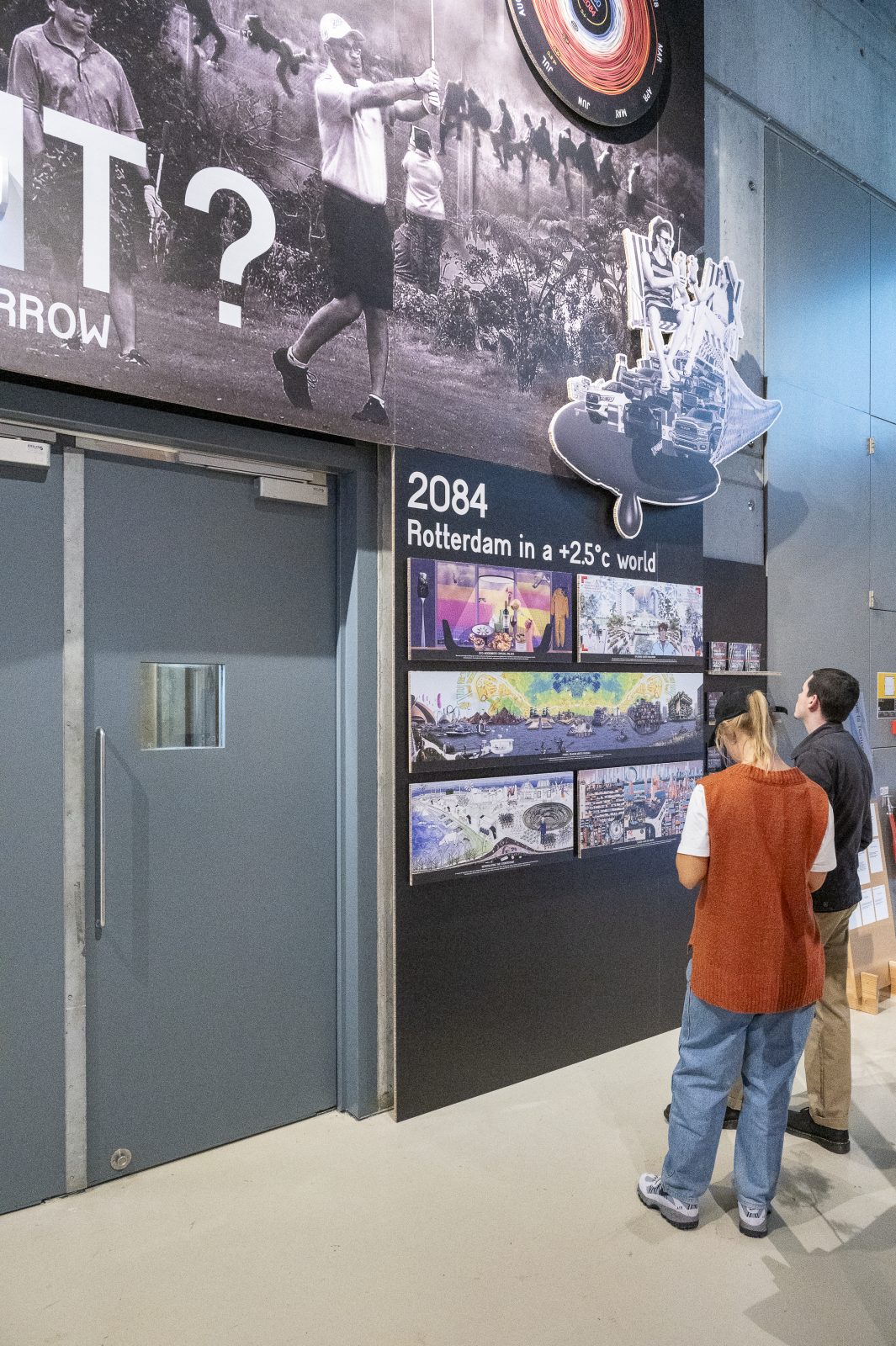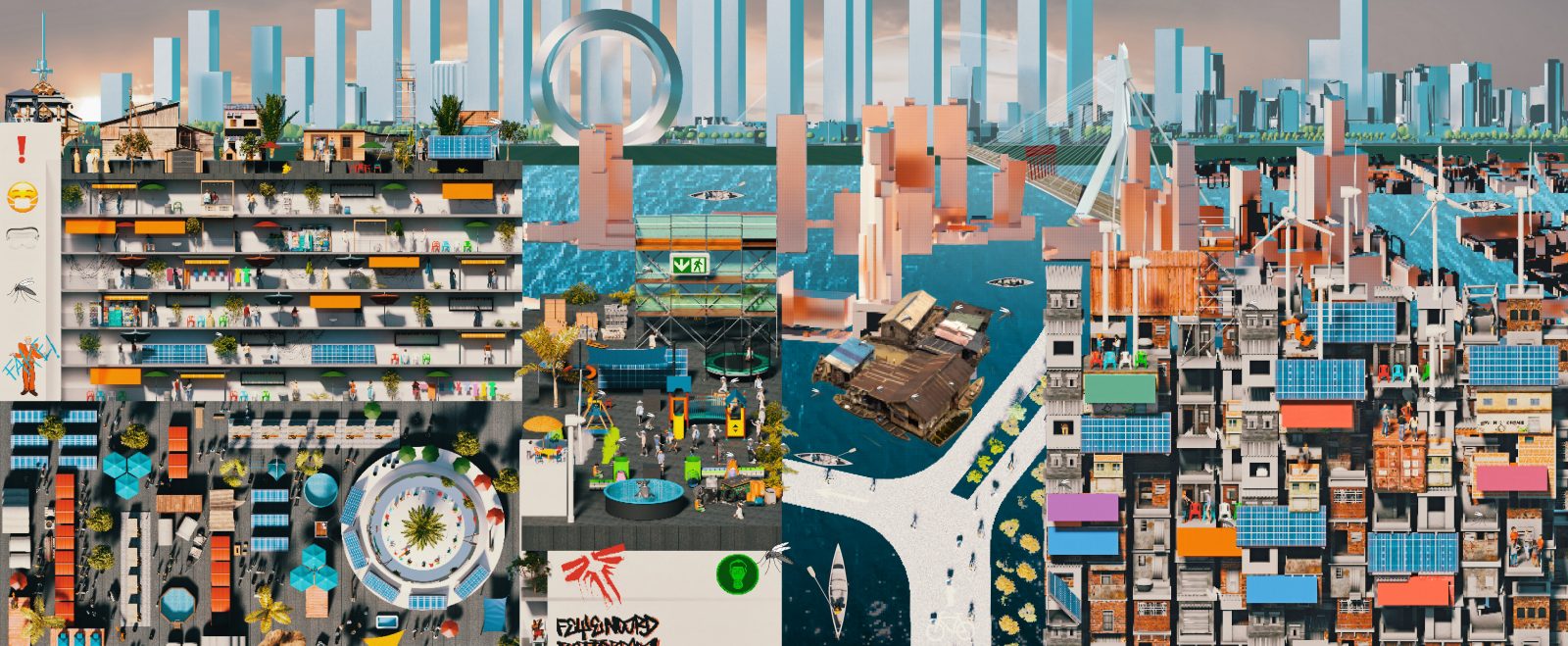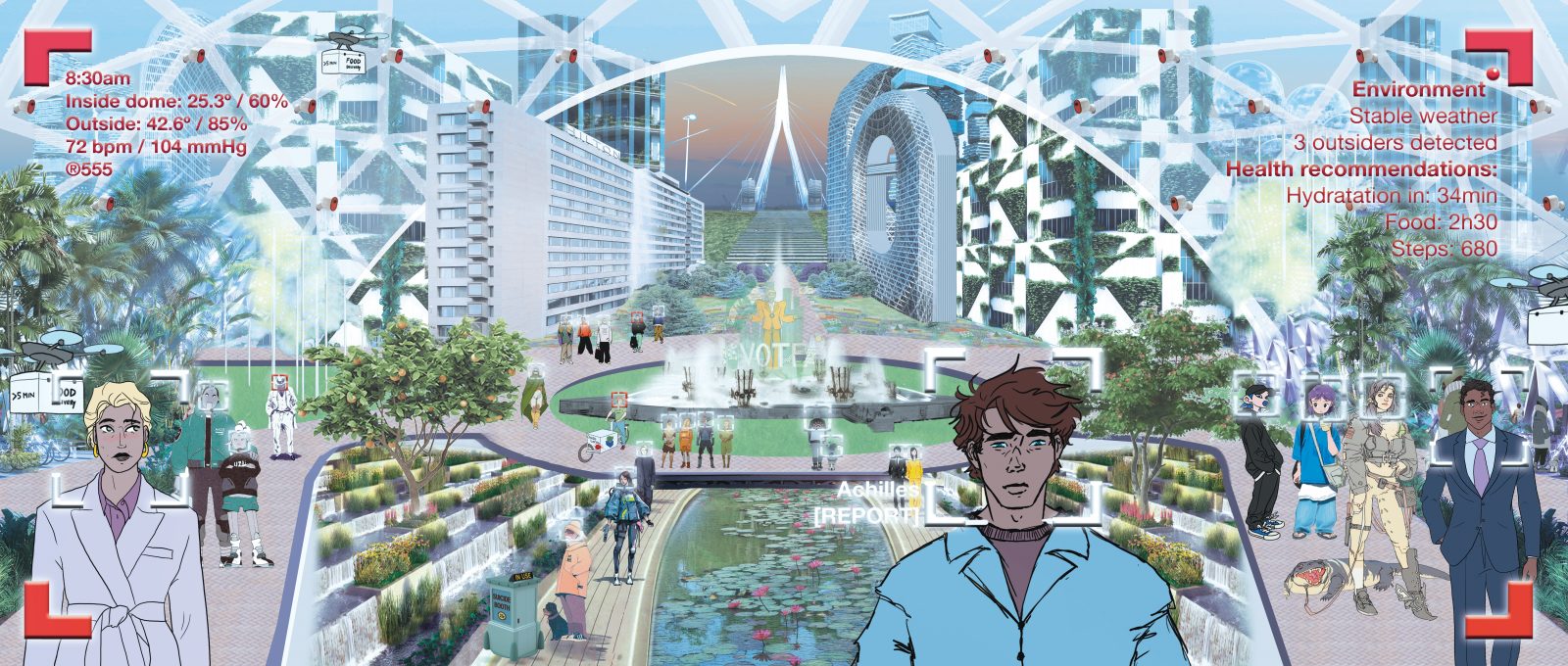This is Tomorrow - Rotterdam in a +2,5 World
In the Summer of 2024, the Independent School for the City has been part of the International Architecture Biennial Rotterdam - The Nature of Hope, curated by Janna Bystrykh, Hani Salih, Noortje Weenink, Catherine Koekoek and Alina Paias.


The exhibition took place at the Nieuwe Instituut and showed in over 70 ways how to spark hope, inspiration, and discussion about the ways in which we can all contribute to and positively influence positive change in our environment.
Together with the participants and tutors of the thematic block on the Anthropocene in our This is Tomorrow programme, we have developed an installation that responds to the expected +2.5°C global temperature rise around the year 2084.
With a strong believe that only by facing the painful truth about climate change, we can truly prepare ourselves for what is to come, we asked ourselves: What if we stopped pretending that an environmental catastrophe can still be avoided? That the warming of the planet is an isolated crisis? That we can sustain the globalised industrial society by simply substituting fossil fuels by renewables? And stopped pretending some strategic technological and design interventions will solve the environmental conundrum? Facing this truth brings hope we will muster up the courage to do the right things without being sure of the outcome.



At the same time we realise that future never unfolds according to the clear-cut scenarios we like to imagine. The usual scenarios with three or four extremes tend to be self-constructed fairy tales where we find ourselves comfortably in the middle. Therefore, we have chosen to develop a single climate run away scenario for the Rotterdam region, which is hybrid and shows the frictions that cohabitation of wildly different agendas, claims and divergent world views will bring in this warming world. A different anamnesis calls for different analysis, brings a different diagnosis, that offers a different perspective, with a different focus and beg different type of plans.
In preparation to this installation, twelve international students of different disciplines took a deep dive into the future to the festive Orwell memorial year of 2084 and presented their findings in school posters.
FOSSIL DRAGON MEETS PHOENIX

The harbor is a fierce battle ground between the new and the old economy. Having friends in high places, the fossil dragon refused to be extinguished completely. Parts of the petrochemical industry survived. Other parts switched to bio-chemical sources. The vast staple stocks of biomass now dominate the harborscape. The renewal from old to new, from east to west, reached its peak in Maasvlakte III and left many in-between places occupied by the undocumented – some living in laid up containerships - and spontaneous nature development.
LAGOS-AAN-DE-MAAS

Rotterdam-South is living up to its loving nickname. It is swarming with a superdiverse informality. Industriousness on all scales, from street trading to small industries, thrives on the entrepreneurial energy of people from more than hundred nationalities. This vibrancy is only equaled by the anarchy in housing, mobility, and public space. Climate catastrophes, wars over the last resources and global inequality produce a never-ending influx of migrants to the deltas of the world. Rotterdam is one of the places to go.
SPLENDID GATED ISOLATION

Existential security is an electoral evergreen in the city republic of Rotterdam-North. Years of lowering risks, tight surveillance, focus on livability made this part of Rotterdam a conglomeration of controlled, architecturally top grade, but gated communities. Parts of the city are domed to shield it from the aggressive climate. Even the air which Rotterdammers breathe is monitored and the water disinfected. Waste heat and the residual flows of forever chemicals are flushed into the New Wasteweg. Still, a chronicle anxiety looms that those to whom they owe their welfare will come for it.
REPOPULATING THE COUNTRYSIDE

The spawning of a myriad of agricultural styles in the Hoeksche Waard had an unexpected side-effect. Biodynamic, agro-ecologic, food forestry, organic, regenerative, and radical decarbonised farming have one thing in common: human labor is crucial again. After a century of losing people to the city, the countryside is repopulating. Although globalised agriculture crashed into its planetary boundaries, high-input high-output agriculture survives in the center of the Hoeksche Waard due to the dominant position of onions in all the kitchens of the world and thanks to the traditionalist Christian farmers ethos.
ECO-MODERNISTS CRYSTAL-PALACE

Because of its high standing agro-techno-culture the Westland survived many global crises. In 2084 it produces mainly delicacies for the regional NW-European markets. The ultimate victory is a highly acclaimed wine from old grape races that were saved from the blistering heat of former French wine-regions. Animal proteins are produced in the form of insects, some general plant proteins are produced by microbes in the harbor. The migrants that work in this artificial short life span world worship old living entities such as sparse older trees forgotten by the horticulturists.
This exhibition was developed by Ilia Aladov, Eric Barendse, Oishika Basak, Leonie Bode, Santiago Brignardelli, James Crossley, Claudia Diana, Ewout Dorman, Aleksandra Drozdowska, Mike Emmerik, Anna Janssen, Dirk Sijmons, Herman Kossmann, Camille Poureau, Michelle Provoost, Sana Rizwan Gondal, Julia Rozentsvit, Suzanne Stam, Wouter Vanstiphout, Yidi Wang, Emma Yuen.